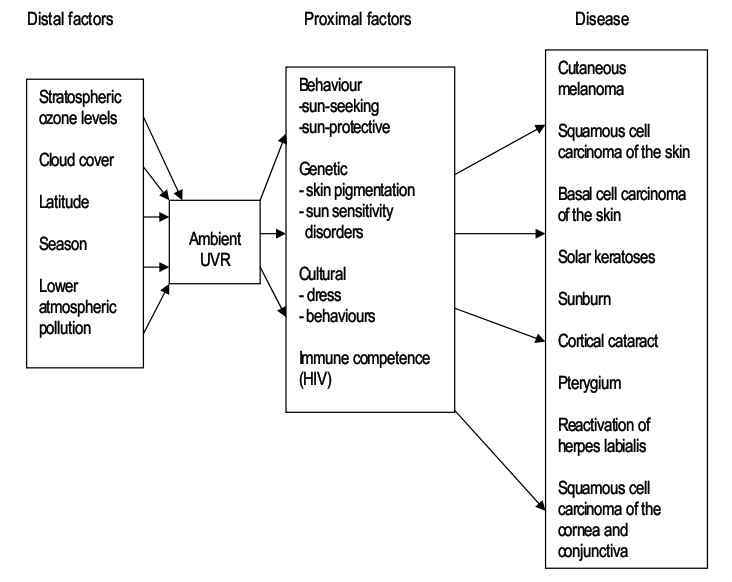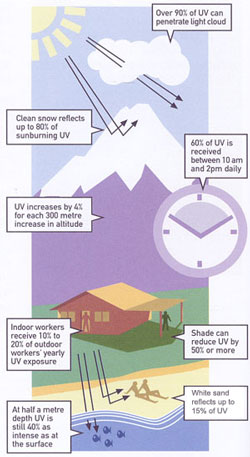2200X more problems from no UVB than too much UVB - WHO 2006
World Health Organization report from 2006
CLICK HERE for PDF
optimal = Not too much and not to little UVB

Summary: Daily Adjusted Life Years
If could get less UVB - 1.5 million DALYs could have been avoided
If get no UVB 3,304 million DALYs would have been lost due to vitamin D deficiency diseases – rickets, osteomalacia and osteoporosis.
= 2200X more disability if have no UVB than if have too much UVB
What the above chart should look like using the WHO data

Figure 2.1 Schematic diagram of the relation between ultraviolet radiation (UVR) exposure and the burden of disease
A = Vitamin D insufficiency
B = Optimal
C= Skin cancers, eye disease
Horizontal line = Personal exposure to UVR relative to skin type
Caption
Points A and C represent inappropriate UVR exposure. Fair-skinned populations in Australia with high outdoor UVR exposure typify point A.
Point C represents people with insufficient UVR exposure, whose dietary vitamin D intake will also be important in determining their vitamin D status.
Point B represents optimal UVR exposure: a person with careful titration of correct UVR dose for skin type.
from: Lucas, RM and Ponsonby, AL. Ultraviolet radiation and health: friend and foe. MJA 177:594-598
Diseases with increasing incidence where UVR exposure/vitamin D is inadequate:
Autoimmune diseases : Multiple sclerosis Type 1 diabetes Rheumatoid arthritis
Cancers : Prostate Breast cancre Colorectal cancer Ovary cancer Non-Hodgkin lymphoma
Psychiatric disorders : Seasonal affective disorder Mood disorders Schizophrenia
Diseases with increasing incidence where UVR exposure is excessive
Acute macular degeneration
Posterior subcapsular cataract
Nuclear cataract
Ocular melanoma
Diseases CAUSED by UVB = too much

The WHO paper states that the 2200X did not even consider DALYs due to
cancers of the colon, breast, prostate, ovary, Hodgkin and non-Hodgkin lymphoma, etc.
autoimmune diseases such as type 1 diabetes and rheumatoid arthritis;
cardiovascular diseases such as hypertension, acute stroke and coronary artery disease;
endocrine disorders such as type 2 diabetes;
Cited 754 times as of May 2025
See also Vitamin D Life
Which Is Worse - Avoiding Sunlight or Vitamin D Deficiency – April 2019
Low UVB (thus low Vitamin D) is linked to many diseases – Grant Jan 2016
Even if a J curve exists, it is 50X better to give vitamin D than not give it – May 2013
- Article Title: When Is a U-Curve Actually a J-Curve? Is It Really Too Much of a Good Thing?
Image from above reference

short URL for this page = http://is.gd/WHO2006
Title change made Dec 2021 caused the visitor count to reset.
There have actually been visitors to this page since it was originally made
